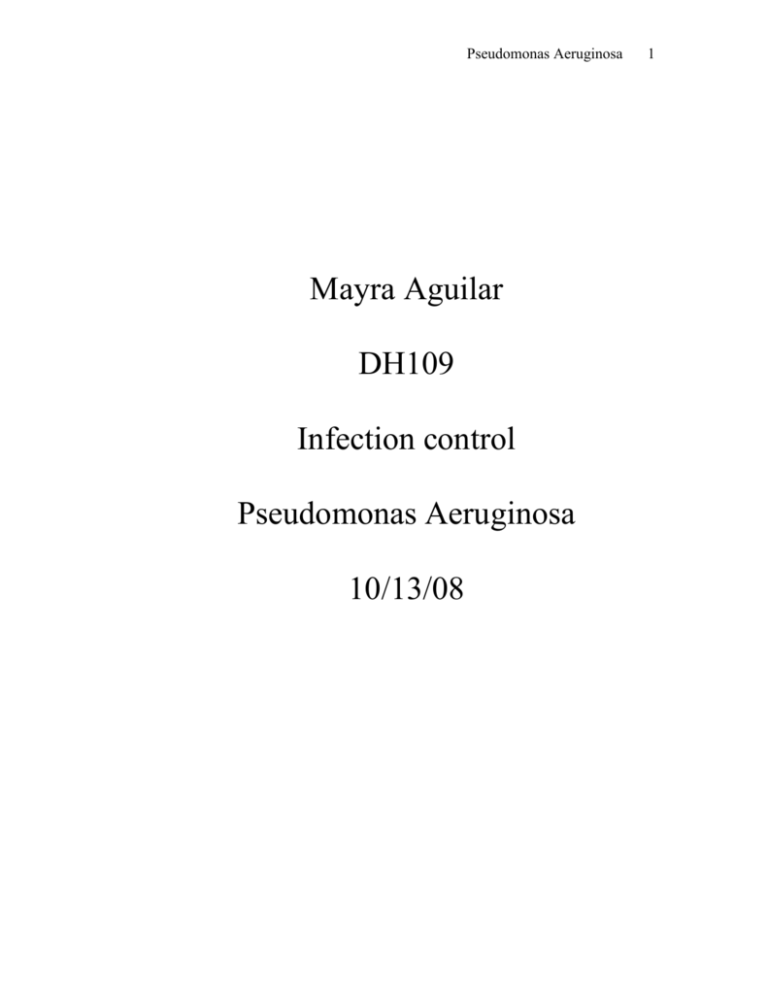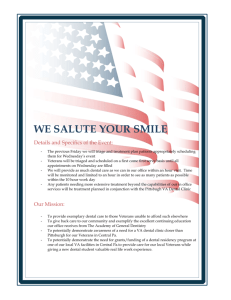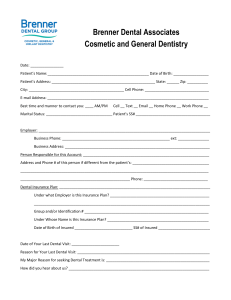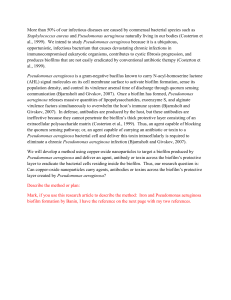pseudomonas aeriginosa
advertisement

Pseudomonas Aeruginosa Mayra Aguilar DH109 Infection control Pseudomonas Aeruginosa 10/13/08 1 Pseudomonas Aeruginosa 2 Water delivered by dental water unit systems in general dental practices can harbor high numbers of bacteria, including opportunistic pathogens. (Schel, Marsh, Bradshaw, Finney, Fulford, Frandsen 2008) Dental water lines can be colonized by different types of bacterial biofilm. One of these types of bacteria includes Pseudomonas aeruginosa which is a type of bacteria that can cause serious problems in immunocompromised patients. First, I will explain where pseudomonas is found, why it is of clinical relevance, when it can cause disease, and the things that can be done to minimize the exposure of this organism to dental patients. According to Todar (2008), Pseudomonas aeruginosa is a free-living bacterium, commonly found in soil and water. It has become increasingly recognized as an emerging opportunistic pathogen of clinical relevance. The bacterium almost never infects uncompromised tissues, yet there is hardly any tissue that it can not infect if the tissue defenses are compromised in any manner. Pseudomonas can cause urinary tract infections, respiratory system infections, dermatitis, soft tissue infections, bacteremia, bone and joint infections, gastrointestinal infections, and a variety of systemic infections. As we can see this is an organism that can cause many different types of infections especially in people that don’t have a healthy immune system. Immunocompromised patients are more prone to getting an infection from pseudomonas than other people with normal immune systems since this is an opportunistic pathogen. For instance, according to Rodriges, Shenoy, and Joseph (2005), a report from England showed that two cancer weakened dental patients acquired oral infections with Pseudomonas aeruginosa that originated from dental unit water, the same study also showed that an additional 78 patients treated at the same dental unit were Pseudomonas Aeruginosa 3 orally colonized for 4-10 weeks by P.aeruginosa present in the dental unit water. This shows that anyone can become infected with this type of microorganisms, but people with compromised immune systems are at risk of developing a more serious condition. Furthermore, the most common infective agent on people with cystic fibrosis is Pseudomonas aeruginosa as it can cause increased inflammation of the respiratory tract. (Mayo Clinic 2008) Seeing all the problems that this microorganism can cause, the most important thing that health care workers can do is to protect these patients by making sure that they are not exposed to Pseudomonas during dental treatment. We need to remember that not all people are healthy enough to fight an infection that otherwise would not cause a serious reaction. Furthermore, there are many things that can be done to prevent the growth of biofilm in dental waterlines. For example, according to Rodrigues, Shenoy, and Joseph (2005), antiretraction valves are fitted on modern handpieces to reduce oral suck back from the oral cavity preventing a retrograde infection. Anti retraction valves can also be fitted on the waterlines. I think that using antiretraction valves can help limit cross contamination if it is used in a correct way and if workers make sure that it is working properly. Also, flushing the dental waterlines for 2 minutes at the start of the day and for 20-30 seconds between patients will reduce the bacterial count by approximately 97%; however, it will not reduce the total count to less than 200 cfu/ml nor will it remove the biofilm. (Rodrigues, Shenoy, Joseph, 2005) Even though biofilm is not completely removed, flushing water lines would help make sure that we are not exposing patients to bacterial amounts that could cause any harm to them. If it only takes a few minutes to ensure the well being of individuals, then it is worth doing it. In addition, according to Pseudomonas Aeruginosa 4 McDowell (2004), a proactive approach is taken by a new product, A-dec ICX waterline tablets (A-dec Newburg, Ore.), an effervescent tablet that is added directly to the dental unit water bottle at each refill. According to this article the six treated units, showed no appreciable bacterial counts-less than 3 CFU/mL- during the 16-week study. Biofilm development in the untreated control test units, produced effluent counts that rapidly exceeded those of the innoculum population. This article shows that dental water units that were not treated with the product, had an increase in bacterial biofilm than the ones that were exposed to the product. Using a product that inhibits the growth of bacteria could be a better solution than just flushing water lines. It seems like it would be safer to use some kind of product like the one being used in this experiment in order to ensure the safety of water used for dental treatment. There are different methods to lower the amount of biofilm present in dental unit water lines, and the one that works better should be used to reduce the risk of exposure to patients. Finally, according to Schel (2006), patients in the EU visit general dental practices every six months, with over 20 million visits per year in one large EU country alone. During almost every visit, the patient and the dental health care staff are exposed to the water from DUWS. As a result, as dental health care workers, it is our responsibility to make every effort to protect patients from being exposed to something that can cause them harm. While not all microorganisms can cause harm to patients, we need to remember that there are a few of them that will cause infection if the patient’s immune system is compromised. We have to remember that it is very important that we follow guidelines that have been set to protect patients from contamination in the dental office. If it only takes us two minutes to flush the water lines and make sure that water is Pseudomonas Aeruginosa safe, then we should make sure that we do it. Patients come to a dental office to make sure that their oral health is improved, so they should not be exposed to any type of contamination that can worsen their overall health. 5 Pseudomonas Aeruginosa 6 References Mayo Clinic. (2008). Cystic fribrosis. Retrieved October 13, 2008, from http://www.mayoclinic.com/health/cystic-fibrosis/DS00287 McDowell, J.W., Paulson, D.S., Mitchell, J.A., (2004). A simulated-use evaluation of a strategy for preventing biofilm formation in dental unit waterlines. The Journal of the American Dental Association, volume 135,(issue 6). Retrieved October 11, 2008, from http://jada.highwire.org/cgi/content/full/135/6/799 Rodrigues, S., Shenoy, V., Joseph, M. (2005). Changing face of infection control: Dental unit water lines. The Journal of Indian Prosthodontic Society, volume 4(issue 4). Retrieved October 10, 2008, from http://www.jprostodont.com/article.asp?issn= 09724052;year=2005;volume=5;issue=4; space=170;epage=174;aulast=Rodrigues Schel, A.J, Marsh, P.D., Bradshaw, D.J., Finney, M., Fulford, M.R., Frandsen, E. et al. (2006). Comparison of the efficacies of disinfectants to control microbial contamination in dental unit water systems in general dental practices across the European Union. Applied and Environmental Microbiology, volume 72(2). Retrieved October 13, from 2008,http://www.pubmedcentral.nih.gov/articlerender. fcgi?tool=pmcentrez&artid=1392914 Todar, K. (2008). Pseudomonas aeruginosa. Todar’s Online Textbook of Bacteriology. Retrieved October 13, 2008, from http://textbookofbacteriology.net/pseudomonas. html





